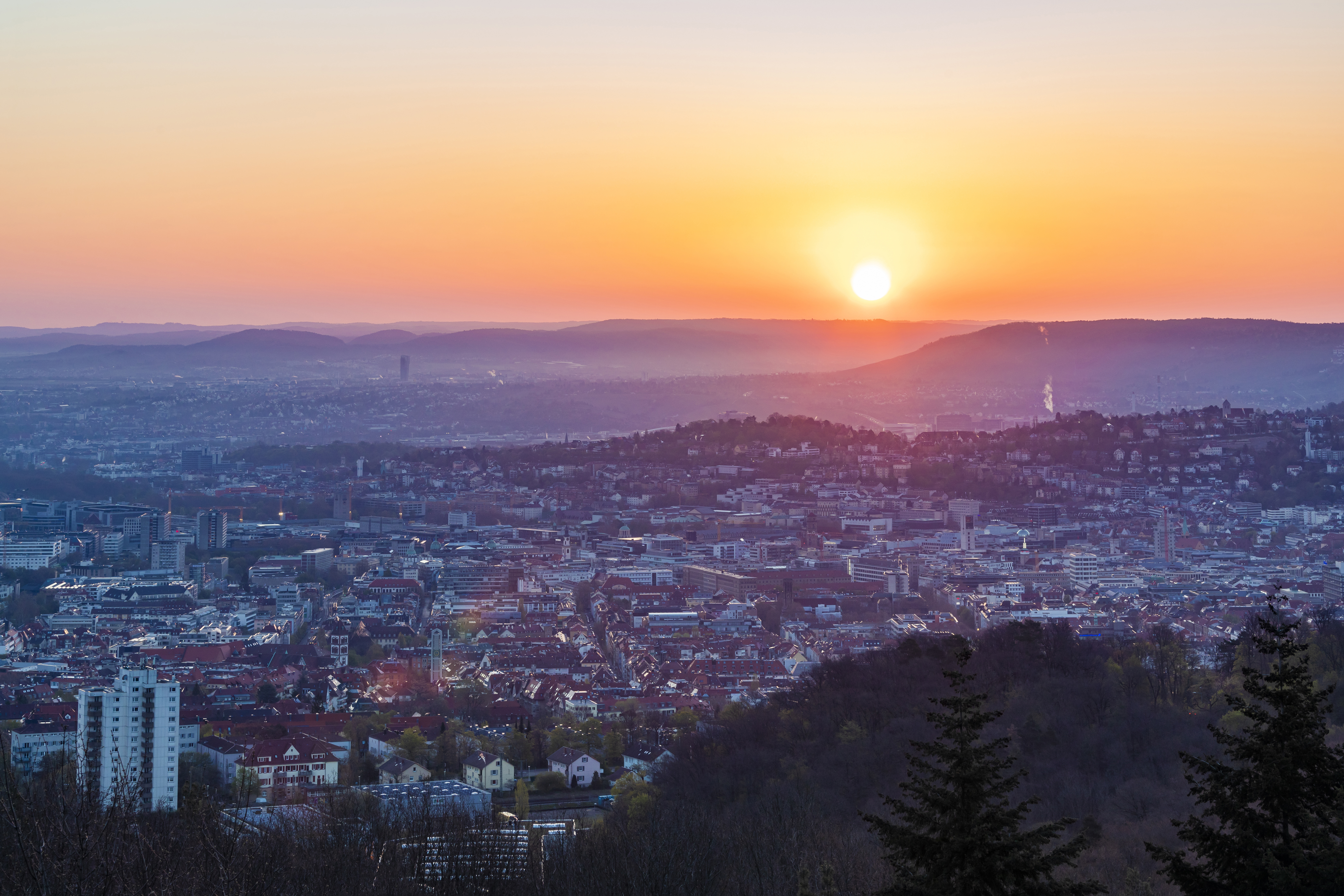Region of inventors, culture metropolis and gourmets' paradise
"Herrgottsbscheißerle" (Maultaschen), the Stuttgart Ballet, Bosch, Ritter Sport, Porsche, Otto Dix, Stihl, Le Corbusier, GinSTR, Kärcher, Kessler, Mercedes, Oskar Schlemmer, the Television Tower, Wulle, Die Fantastischen Vier, Hugo Boss – these are just a few of the many names that have left their mark on the Stuttgart Region and made it what it is today.
The name of Stuttgart derives from "Stuotgarten", the stud farm said to have been founded by Duke Liudolf of Swabia in 950 A.D. To defend it, the Old Palace was built, which since 1949 has housed the Württemberg State Museum. The New Palace was the residence of the kings of Württemberg up to the middle of the 19th century. Today the building contains ministries of the Baden-Württemberg state government and state reception rooms. Palace Square is where the city's heartbeat can best be felt. Just by turning once on your own axis, you can see many of the city's main attractions: a synthesis of medieval, baroque, classical and contemporary architecture, Stuttgart's characteristic hill slopes, views of the vineyards, the Mercedes Star on top of the station tower – and overlooking it all a symbol of Stuttgart's inventive genius – the Television Tower.
For Car Enthusiasts
The Stuttgart Region is the cradle of the automobile – and thanks to the Mercedes-Benz Museum and the Porsche Museum a mecca for automobile fans from all over the world. The Mercedes-Benz Museum is a living testimony to the over 135-year evolution of the automobile and the Mercedes-Benz brand. It documents automotive and contemporary history from the world's first patented car to the hydrogen-powered vehicles of the future. At the Porsche-Museum more than 80 vehicles illustrate the history of this sports car producer. Another automotive highlight is the Motorworld Region Stuttgart in Stuttgart-Böblingen. The complex, consisting of a design hotel, an event venue and an exhibition, is a stylish setting for all kinds of activities on the theme of classic cars. The automobile pioneer Gottlieb Daimler was born as the son of a baker in Schorndorf in the year 1834. His Birthplace is now a museum and gives personal insights into the inventor's cosmos.
For Culture Lovers
The 26-m-high glass cube of the Museum of Art is a work of art in its own right. It owns a world-famous collection of works by Otto Dix, including the "Portrait of the Dancer Anita Berber" and the "Metropolis" triptych. The State Gallery's postmodernist Stirling building is an eye-catcher on Stuttgart's so-called 'culture mile'. One of Germany's most popular art museums, its treasures include Oskar Schlemmer's "Figurines from the Triadic Ballet" from the early 1920s and the Joseph Beuys Room, which the artist installed himself. The Weissenhof Estate in Stuttgart is an important testimony to the Bauhaus style of architecture. Conceived by 17 architects in 1927 for the Werkbund exhibition "Die Wohnung" ("The Dwelling"), its two Le Corbusier houses are now a UNESCO World Cultural Heritage site. The Stuttgart State Theatres, Europe's largest triple-branch theatre ensemble, are the city's cultural flagship. The award-winning Stuttgart State Opera provides new impulses for contemporary music theatre, dance enthusiasts associate the Stuttgart Ballet with great names such as John Cranko and Marcia Haydée, and the Schauspiel Stuttgart theatre company is often in the public eye as one of the most innovative in German-speaking theatre circles. As the birthplace of German Hip-Hop, the Stuttgart Region has a diverse and innovative music scene. The annual jazzopen Stuttgart, the Stuttgart Music Festival or the Ludwigsburg Festival are outstanding examples of this.
For Epicures
Stuttgart's cityscape is defined by the vineyards which stretch into the centre of town. This wine-growing region with a long tradition has many great "Wengerter" (vintners). Their wines have won many awards and appeal to the taste of wine lovers and experts alike. Much of the wine produced here is also drunk locally, for example in the traditional "Besenwirtschaften" ("broom taverns") – temporary wine taverns serving only the wine growers' own wines and delicious Swabian food. You'll find all you need to know about the history of wine growing at the Stuttgart Museum of Viniculture. Down-to-earth Swabian dishes and exquisite starred cuisine are equally at home in the Region. "Maultaschen" (filled pasta) or "Gaisburger Marsch" (a savoury hotpot) are just two of the classic regional specialities. For starred fine dining there is a wealth of starred restaurants – with seven in Stuttgart alone, and 14 more in the Region. Traditions are also kept alive at the annual festivals: the Cannstatt Beer Festival has become one of the largest public festivals in the world. The focus here is on the huge beer tents of Stuttgart's breweries. The Stuttgart Wine Festival and the Fellbach Autumn Festival are just two of the many wine festivals, and in the weeks of Advent there are countless atmospheric Christmas markets.
A Look at the Region
The area around Stuttgart stands out with its medieval charm, baroque elegance and famous men of letters. Nowhere else are there so many well-preserved half-timbered buildings as in the medieval town of Esslingen. The city of Ludwigsburg boasts Germany's largest baroque palace complex. Ludwigsburg Palace (1733), also known as the "Swabian Versailles" consists of 18 buildings and is surrounded by a 32-hectare park. The Galerie Stihl in Waiblingen and the Kunsthalle Würth present outstanding art collections and no less interesting temporary exhibitions. The Museum of Modern Literature and the National Schiller Museum in Marbach am Neckar are the only buildings in the world to be devoted exclusively to exhibitions of literary works. In Göppingen the Märklineum presents on an exhibition area of 2,000 square metres products from the whole of the firm's past and documents the history of the company Märklin. A special highlight is the 200-square-metre model railway layout, which can be accessed on two levels.
Additional information on the Stuttgart Region under www.stuttgart-tourist.de
